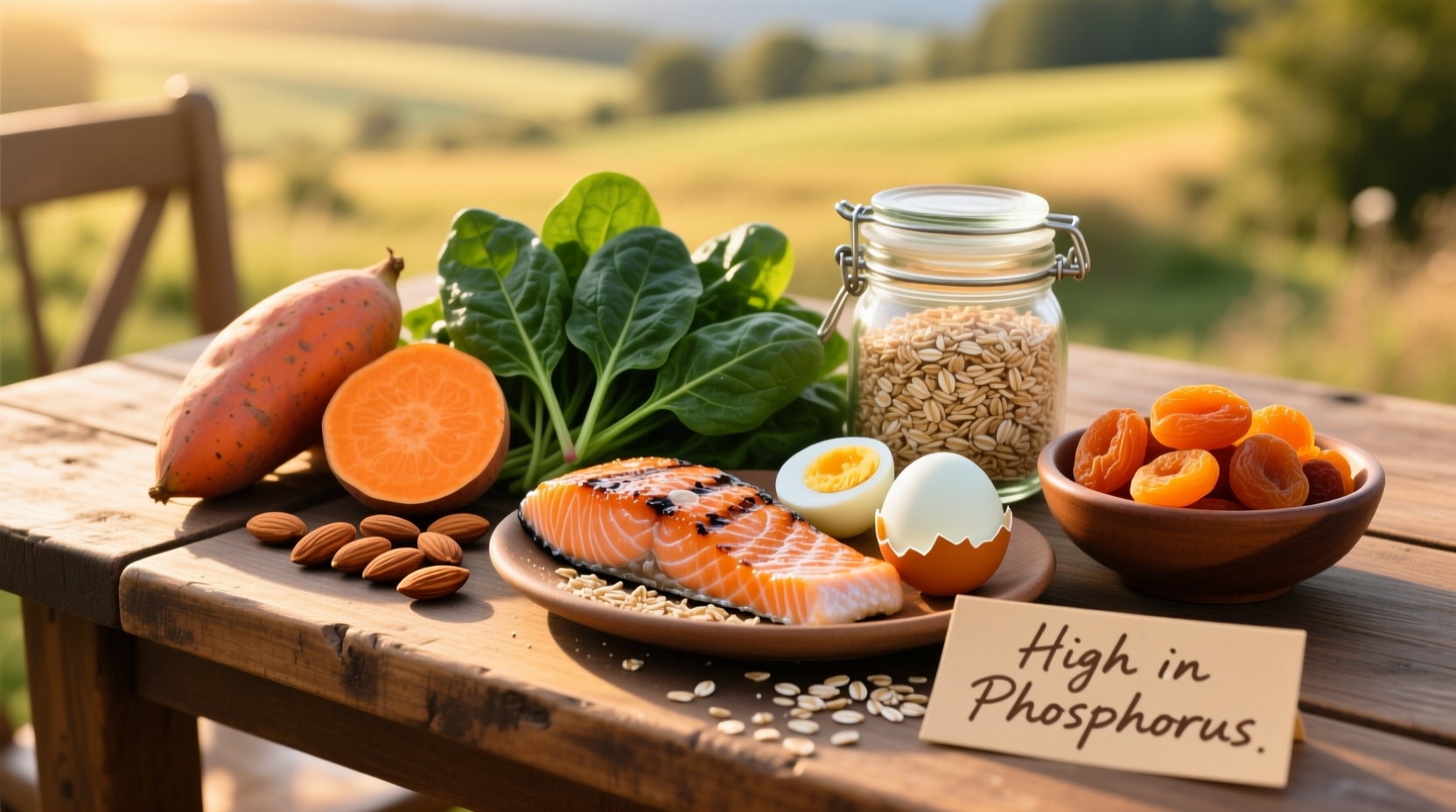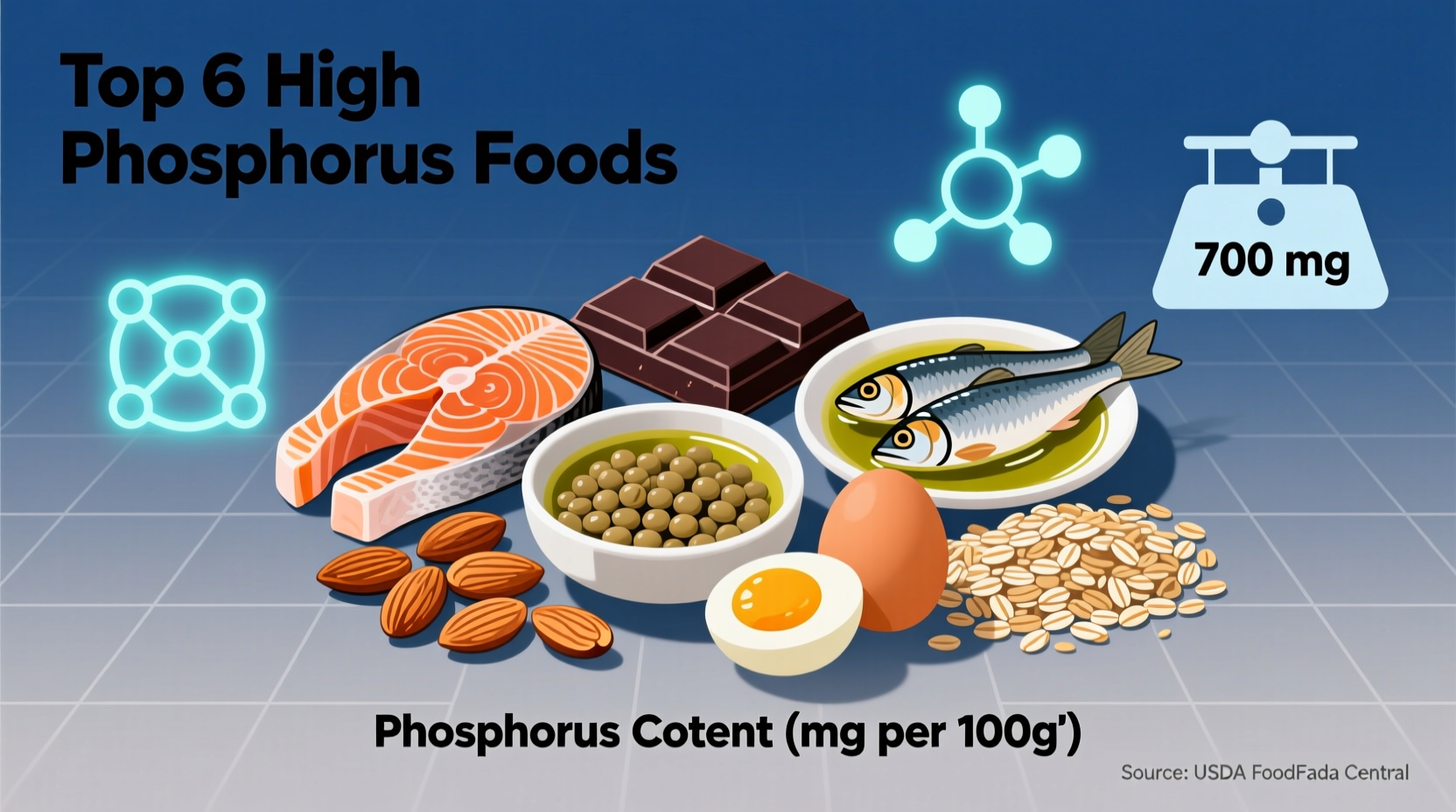Why Phosphorus Matters for Your Health
Phosphorus ranks as the second most abundant mineral in your body after calcium, playing critical roles in bone health, energy production, and cellular function. This essential nutrient works closely with calcium to build strong bones and teeth while helping your body utilize carbohydrates and fats efficiently. Most adults require about 700 mg of phosphorus daily, though needs vary based on age, health status, and activity level.

Top High Phosphorus Foods by Category
Understanding which foods contain significant phosphorus helps you make informed dietary choices. Below we've organized high-phosphorus foods into practical categories based on typical meal planning.
Dairy Powerhouses
Dairy products consistently rank among the richest natural sources of phosphorus. A single cup of nonfat milk delivers approximately 250 mg of phosphorus, while plain yogurt provides even more at around 300 mg per 8-ounce serving. Cheese varieties like Swiss and mozzarella also contribute substantial amounts, with Swiss cheese offering about 250 mg per ounce.
Protein-Rich Options
Animal proteins serve as excellent phosphorus sources. A 3-ounce serving of cooked salmon contains approximately 275 mg, while the same portion of chicken breast provides about 200 mg. Organ meats like liver offer exceptionally high concentrations, with beef liver containing roughly 475 mg per 3-ounce serving. Eggs contribute about 90 mg per large egg, primarily in the yolk.
| Food Item | Serving Size | Phosphorus Content (mg) |
|---|---|---|
| Pumpkin seeds | 1 ounce | 350 |
| Sunflower seeds | 1 ounce | 285 |
| Almonds | 1 ounce | 135 |
| Black beans | 1 cup cooked | 240 |
| Lentils | 1 cup cooked | 175 |
| Quinoa | 1 cup cooked | 280 |
Plant-Based Phosphorus Sources
For vegetarians and vegans, several plant foods provide significant phosphorus. Nuts and seeds stand out particularly, with pumpkin seeds offering an impressive 350 mg per ounce. Legumes like black beans and lentils contribute substantial amounts, while whole grains such as quinoa and oats provide moderate phosphorus levels. It's worth noting that plant-based phosphorus has lower bioavailability than animal sources due to phytic acid content, though soaking and sprouting can improve absorption.
Understanding Phosphorus in Processed Foods
Many processed foods contain added phosphorus in the form of preservatives and flavor enhancers. These inorganic phosphates appear in ingredients lists as terms like "phosphoric acid," "sodium phosphate," or "calcium phosphate." Common sources include carbonated beverages (especially colas), processed cheeses, deli meats, and baked goods. Unlike naturally occurring phosphorus, these additives have nearly 100% absorption rates, potentially leading to excessive intake when consumed regularly.
Special Considerations for Kidney Health
Individuals with chronic kidney disease must carefully monitor phosphorus intake, as impaired kidney function reduces the body's ability to eliminate excess phosphorus. The National Kidney Foundation recommends limiting phosphorus to 800-1,000 mg daily for those with moderate to severe kidney disease. This requires avoiding high-phosphorus foods like dairy, processed meats, and carbonated beverages while working with a registered dietitian to create a balanced meal plan.
Practical Tips for Managing Your Phosphorus Intake
Whether you're aiming to increase or decrease your phosphorus consumption, these practical strategies can help:
- For general health: Include a variety of protein sources and whole foods to naturally meet your daily needs
- To boost intake: Add pumpkin seeds to salads, incorporate dairy into meals, or include fish twice weekly
- To reduce intake: Choose fresh foods over processed options, limit carbonated beverages, and read ingredient labels carefully
- For kidney health: Work with a dietitian to identify appropriate portion sizes and alternatives
Common Misconceptions About Dietary Phosphorus
Many people mistakenly believe they need to actively seek high-phosphorus foods to meet their requirements. In reality, phosphorus deficiency is extremely rare in healthy individuals consuming a typical Western diet. The greater concern for most people involves potential overconsumption from processed foods containing phosphate additives. Research published in the American Journal of Clinical Nutrition indicates that excessive phosphorus intake may negatively impact bone health and cardiovascular function, particularly when calcium intake is inadequate.











 浙公网安备
33010002000092号
浙公网安备
33010002000092号 浙B2-20120091-4
浙B2-20120091-4